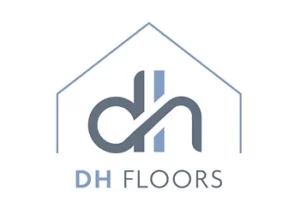Area Rug Pads
Area rug pads are a necessity for every area rug because they add comfort and help protect your flooring.
AREA RUG PADS
Area rug pads are a necessity for every rug in your home. Pads provide a solid foundation for your rug, which protects you, your rug, and your flooring underneath. Area rug pads add extra comfort and help prevent the rug from bunching or slipping. They also protect your flooring from scratching or being damaged by the rug or through regular wear and tear. Area rug pads help extend the life of both your area rug and your flooring underneath.
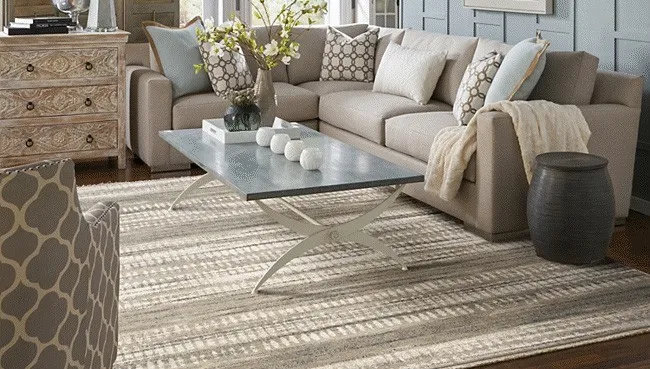
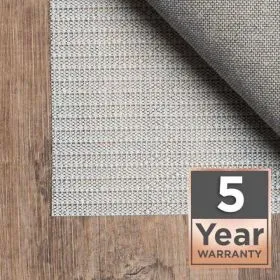
BASIC RUG
PADS
Basic rug pads provide you with what you need to keep your rug in place. They are the most cost-effective and can work well in your home.
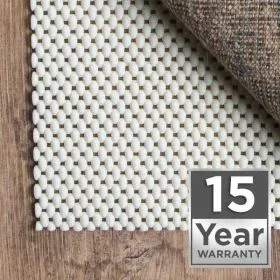
GENERAL RUG PADS
General rug pads are made from a slip-resistant webbed material and largely prevent your rug from sliding out from underneath you when you step on it. You can order a roll and cut it to size or order a pre-cut pad in the specific size you need.
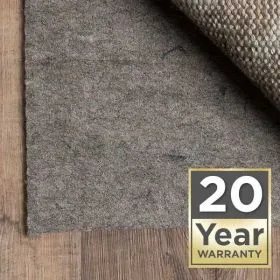
PREMIUM RUG PADS
Premium felt or polyester-blend pads are coated to help them stick to the floor, offering extra protection against movement. They also help to prevent scratches under the rug and are best for adding comfortable padding.
Are Area Rug Pads Important In California Homes?
Area rug pads in California homes are important for a variety of reasons, many of which are valuable in any home with hard flooring, but some are particularly relevant to our California climate and seismic activity:
Preventing Slippage
This is key in homes that feature hard surfaces like hardwood, tile, and laminate. Area rugs without pads can easily slide, wrinkle, or bunch up, creating significant tripping hazards especially for children, the elderly, and in high-traffic areas. Rug pads provide crucial friction, anchoring the rug and enhancing safety.
Preventing Scratches
The backing of area rugs can cause scratches, scuffs, or abrasions on floors over time due to daily foot traffic and furniture movement. A rug pad acts as a protective barrier, absorbing friction and safeguarding your flooring investment.
Preventing Dye Transfer
Some rugs can transfer dyes to the underlying floor, leading to unwanted discoloration. A high-quality area rug pad prevents this direct contact.
Preventing Furniture Dents
Heavy furniture resting on rugs can create dents on floors. Rug pads provide extra cushioning that helps distribute weight and reduce impact.
Sound Absorption
Rug pads help dampen noise, reducing echoes and sounds, which can be particularly helpful in California homes with open floor plans or multiple stories.
Selecting the Right Area Rug Pad
Selecting the right area rug pad is crucial for protecting your floors, extending the life of your rug, and ensuring safety in your home. Here are the key factors to consider:
Pad Type
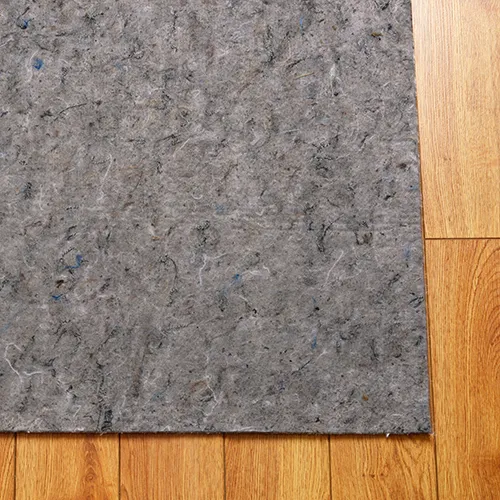
This is the biggest key since different flooring materials react differently to rug pad materials. For hard surface flooring, you generally need a rug pad with good grip to prevent the rug from sliding:
- Best Options: Natural rubber is highly recommended as it provides excellent grip without damaging most floor finishes. Felt and natural rubber combinations are also excellent, offering both grip and cushioning.
- Avoid: PVC (polyvinyl chloride) or synthetic latex/rubber pads can contain plasticizers or adhesives that may react with and damage your floor's finish leaving stains, sticky residue, discoloration, and off-gassing harmful chemicals.
Rug Type
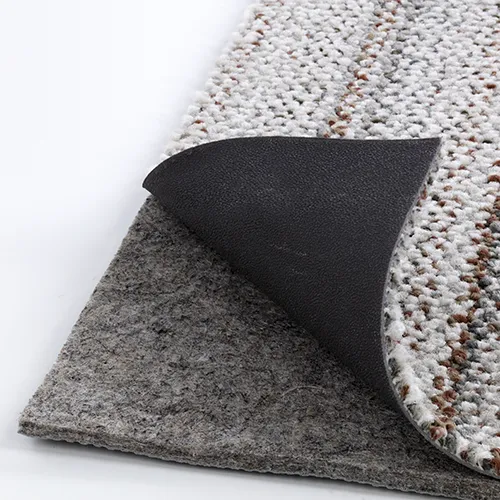
This mainly applies to the thickness of your rug and the rug construction:
- Thin/Flatweave Rugs: Thin rugs tend to slip and bunch easily, so they require a thinner pad (1/8" to 1/4" thick) with strong grip to prevent trips.
- Medium-Pile Rugs: Most common rugs fall into this category and will benefit from a 1/4" to 3/8" thick pad offering a balance of grip and cushion.
- Thick/High-Pile Rugs: Thick shags and hand-knotted wool rugs are heavier and less prone to slipping so a thicker felt pad (up to 1/2" thick) will offer cushioning, sound absorption, and floor protection.
Rug/Pad Size
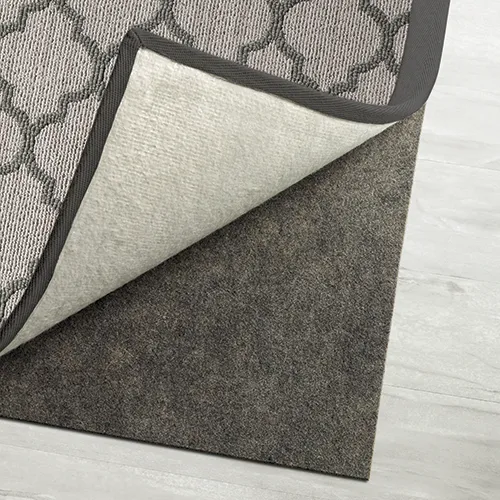
The rug pad should be 1 to 2 inches smaller than your rug on all four sides to ensure the pad is completely hidden under the rug. The rug's edges should drape smoothly to prevent tripping and allowing the rug to lay flat. We recommend a slightly larger pad that you can trim down to size with sharp scissors or a utility knife.
Foot Traffic
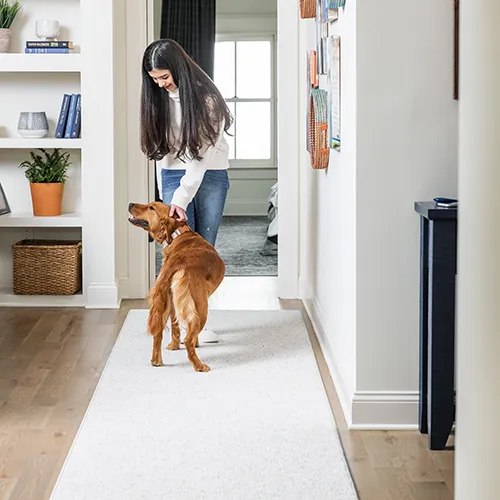
- High-Traffic Areas: Focus on a thin, strong-grip pad to prevent slips & bunching.
- Low-Traffic Areas: You can prioritize cushioning and opt for a thicker pad.




